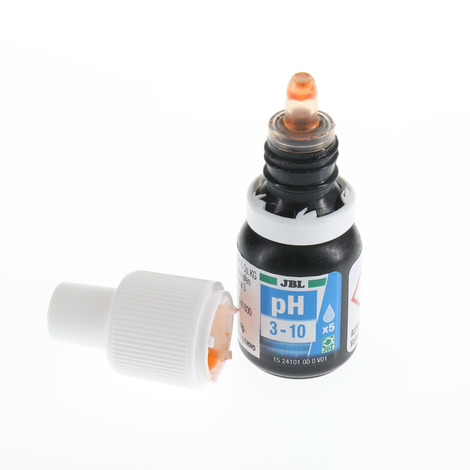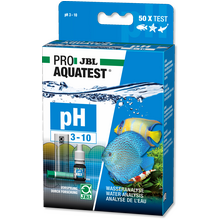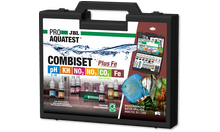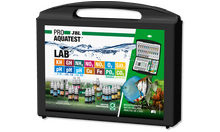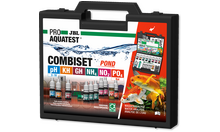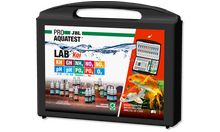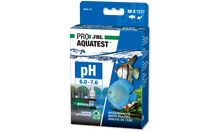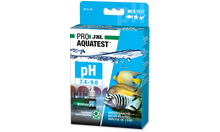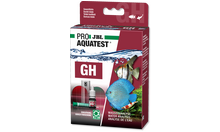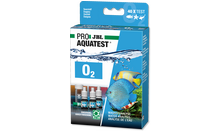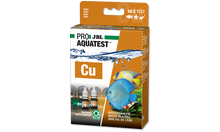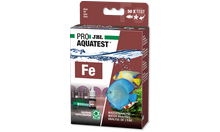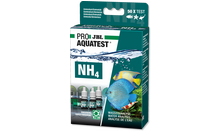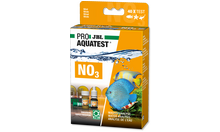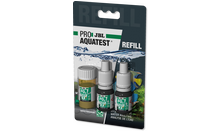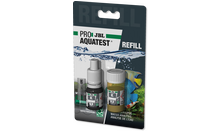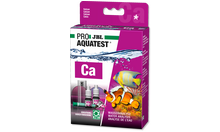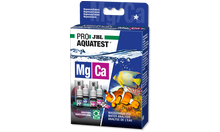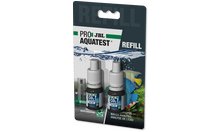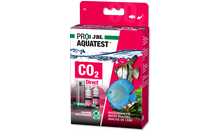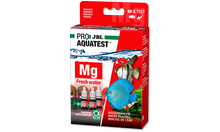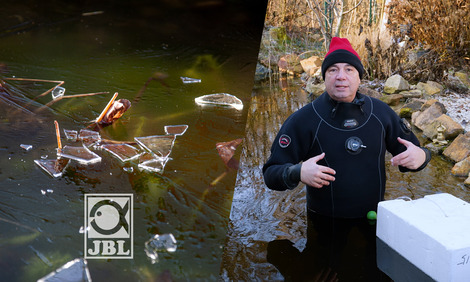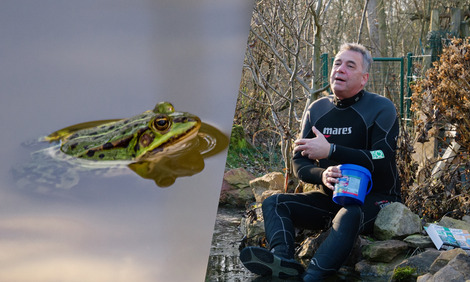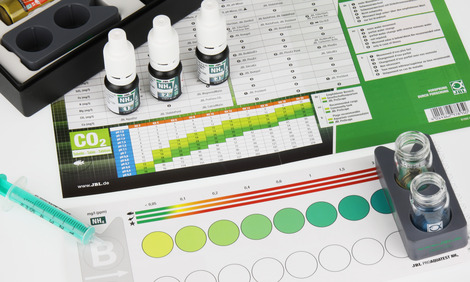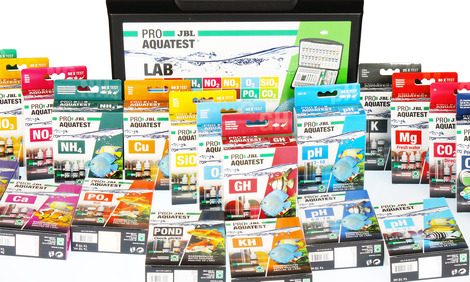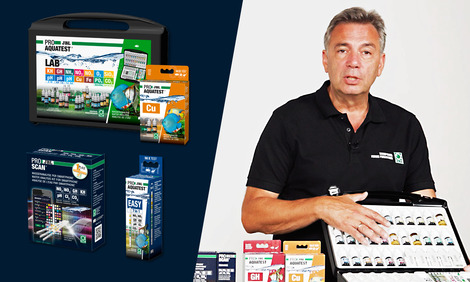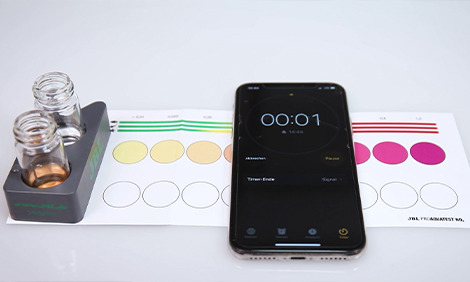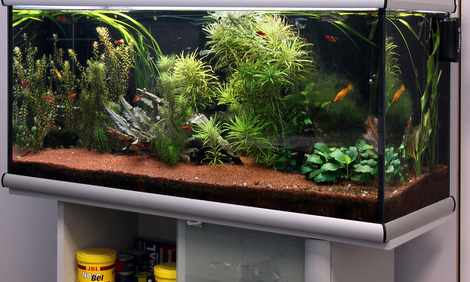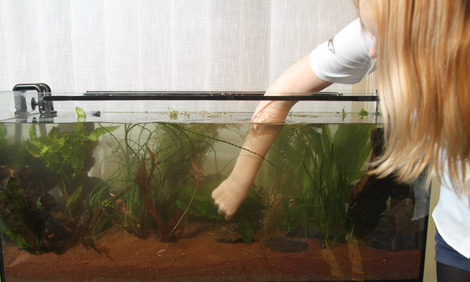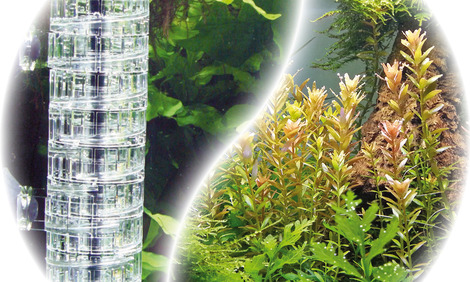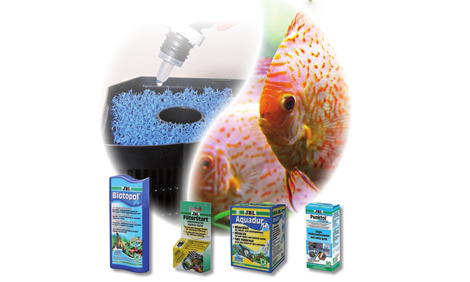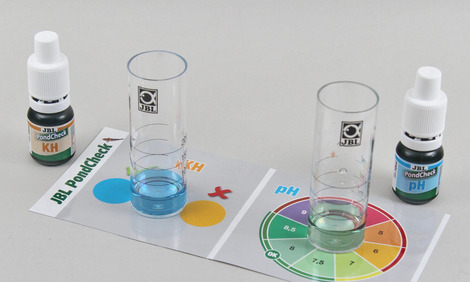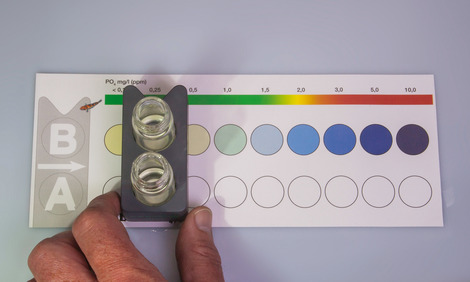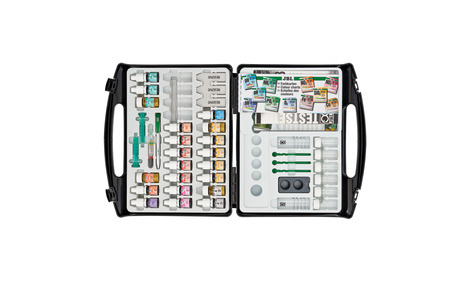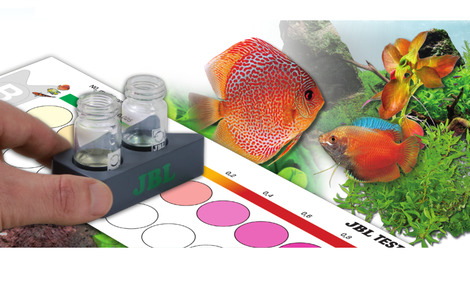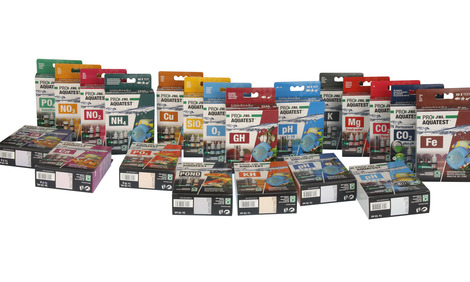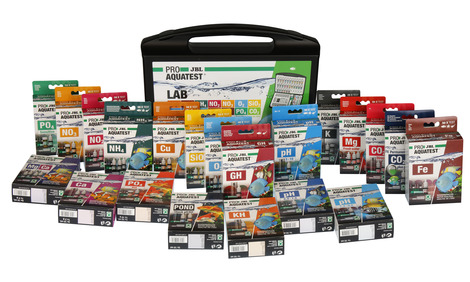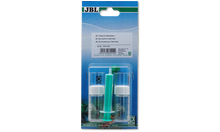Healthy aquarium/healthy pond with conditions close to nature
The right water values are dependent on the fish stock and the plants in the aquarium/pond. Even if the water looks clear it can be contaminated. With bad values diseases or algae can appear in the aquarium/pond. To maintain a healthy aquarium/pond with conditions close to nature it is important to check and adapt the water values regularly.
For each water analysis JBL provides water tests in the form of quick tests or colour change tests. These determine a certain value or several values in one go. With these water tests you can recognise algae problems and negative nitrate, nitrite, potassium, magnesium values etc.
Why test?
The well-being of aquarium and pond dwellers and the healthy growth of aquatic plants depend to a large extent on the pH level being kept as constant as possible. The pH level can also affect many substances dissolved in the water. Fluctuations in the pH level are definitely to be avoided.
JBL Online Laboratory
Regular control for a healthy aquarium/pond with conditions close to nature. Enter your water values into the JBL Online Laboratory and get an in-depth analysis of your values within seconds.
Recommended pH values:
Freshwater aquarium (community aquarium): 6.5-7.5
Lake Malawi/Lake Tanganyika aquarium: 7.8-9.2
Plant aquarium with few fish (aquascaping): 6.0-7.0
Marine aquarium: 7.9-8.5
Pond: 7.5-8.5
JBL PROAQUATEST pH 3.10-10.0
Quick test to determine the acidity in ponds and freshwater/marine aquariums
- Simple and reliable monitoring of the water values in ponds and aquariums. Determines the ideal pH value in fresh and marine water
- Quick test: fill plastic cuvette with sample water, add reagent, read value of the sample off colour chart
- When to use: daily for one week in newly set up aquariums, afterwards weekly
- You will find detailed information and troubleshooting tips about water analysis on the JBL website in Essentials/Aquarium or Pond
- Package contents: 1 complete kit with one reagent pH 3.0-10.0, 1 cuvette and 1 colour chart; contents for approx. 50 measurements


